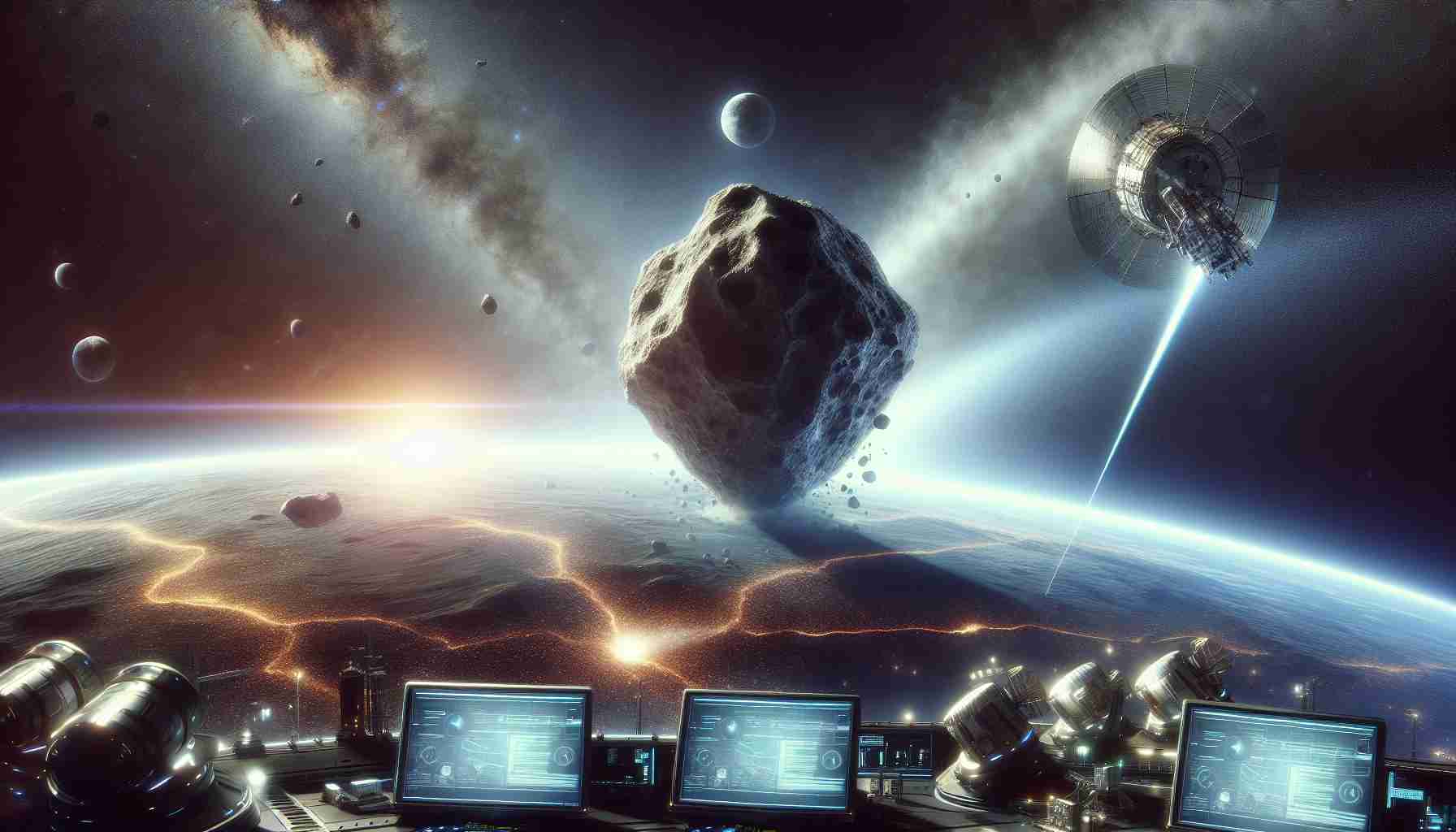- Asteroid 2024 YR4 has been identified as a potential threat to Earth, with a possible impact projected for 2032.
- Advanced telescopic arrays and computer modeling play crucial roles in tracking near-Earth objects, offering early warnings of potential impacts.
- Machine learning algorithms are being utilized to enhance the accuracy of predicting asteroid trajectories.
- Deflection strategies, such as kinetic impactors and nuclear devices, are being explored to alter the asteroid’s path.
- Global collaboration is essential for developing and implementing effective planetary defense strategies.
In a startling discovery, astronomers have identified Asteroid 2024 YR4 as a potential threat to Earth, with projections suggesting a possible impact in 2032. While such scenarios have long been the subject of science fiction, advances in technology might offer humanity a fighting chance against this celestial menace.
A New Era of Space Observations
The identification of 2024 YR4 underscores the importance of sophisticated telescopic arrays and computer modeling in tracking near-Earth objects. These technologies allow for early warning systems that provide crucial years of lead time to devise possible deflection strategies. Scientists are currently leveraging machine learning algorithms to predict the asteroid’s trajectory with increasing accuracy, offering new hope to avert a potential disaster.
Deflection and Diversion Strategies
Emerging technologies in space exploration have opened discussions about feasible methods to alter the course of an asteroid. Concepts such as kinetic impactors, which would collide with the asteroid to nudge it off course, are being tested. Moreover, the potential use of nuclear devices, long considered a last resort, is also being refined with precision targeting systems that minimize risks.
A Call for Global Collaboration
Given the potential consequences of an impact, experts emphasize the need for international cooperation in developing and implementing planetary defense strategies. The sharing of data and resources could prove vital in orchestrating a coordinated response.
As the clock ticks towards 2032, the quest to unlock the full potential of emerging technologies might turn the tide against 2024 YR4. Humanity faces one of its most daunting challenges, but also one of its most promising opportunities to innovate and collaborate on a global scale.
Could Earth Face a Cosmic Collision? Experts Weigh In on Asteroid 2024 YR4
1. What are the latest advancements in space observation technologies for tracking asteroids like 2024 YR4?
Recent innovations in space observation have significantly enhanced our ability to detect and monitor near-Earth objects like Asteroid 2024 YR4. Scientists are now utilizing cutting-edge telescopic arrays that provide high-resolution imagery and data collection. Machine learning algorithms play a pivotal role in analyzing vast datasets to predict asteroid trajectories with increased accuracy. These advancements offer crucial early warnings, allowing for more strategic planning in potential deflection operations.
2. What feasible strategies are currently being explored to avert a possible asteroid impact?
To divert an asteroid like 2024 YR4, several deflection and diversion strategies are under active research and development. Kinetic impactors are among the tested options, where a spacecraft intentionally collides with the asteroid to change its course. There’s also ongoing research into the use of precision-guided nuclear devices as a last resort, aimed at adjusting the asteroid’s trajectory while minimizing collateral damage. Both methods are being refined to ensure reliability and safety in actual deployment scenarios.
3. How is global collaboration shaping the future of planetary defense against asteroids?
International cooperation has emerged as a cornerstone in developing effective planetary defense systems. Countries around the globe are pooling resources and expertise through initiatives aimed at sharing critical data and collaborative technology development. This partnership fosters a holistic approach, which is essential for coordination in the event of an impending impact. The collaborative efforts also drive forward the search for more innovative and efficient deflection methods.
These emerging fields provide humanity with a toolkit to potentially alter the course of a hazardous asteroid, evolving the boundaries of what is considered possible in space science.
– For more insights into planetary defense initiatives, visit NASA.
– To learn about innovations in space observation technology, check out ESA.
– For global collaboration efforts on space safety, explore International Astronomical Union.













